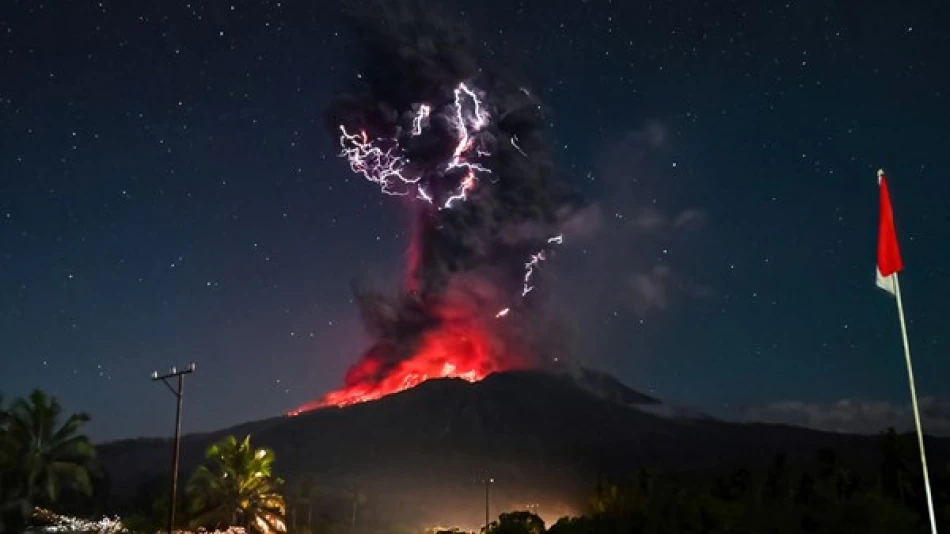
Explosive Eruption of Mount Lewotolly Rocks Indonesia's Volcanic Landscape
Indonesia's Leuotabi Laki-Laki Volcano Erupts Again, Sending Ash 18km High in Escalating Crisis
Mount Leuotabi Laki-Laki on Indonesia's Flores Island has erupted for the second time in 24 hours, launching a massive ash column 18 kilometers into the atmosphere early Saturday morning. The intensifying volcanic activity underscores Indonesia's position as one of the world's most volcanically active regions and raises concerns about potential disruptions to regional air travel and local communities.
Latest Eruption Details
The Indonesian Geological Agency reported that the volcano erupted at 1:05 AM local time (17:05 GMT Friday) in East Nusa Tenggara province, producing dense clouds of gray and black ash. This latest eruption was significantly more powerful than Friday's event, which sent ash only 10 kilometers high, suggesting the volcanic system is becoming increasingly unstable.
The Center for Volcanology and Geological Hazard Mitigation confirmed that volcanic materials are drifting toward the southwest, west, and northwest directions, creating hazardous conditions across multiple areas around the volcano.
Emergency Response and Safety Measures
Evacuation Zones Expanded
Authorities have maintained the volcano at the highest alert level and expanded safety perimeters, urging residents and visitors to stay away from a 6-7 kilometer radius around the crater. This precautionary measure reflects lessons learned from Indonesia's history of deadly volcanic eruptions, where inadequate evacuation zones have previously resulted in casualties.
Regional Impact Assessment
The escalating eruptions pose immediate risks to local agriculture, water supplies, and infrastructure. Volcanic ash can contaminate water sources, destroy crops, and damage buildings, creating long-term economic challenges for the already remote Flores Island communities.
Indonesia's Volcanic Landscape
Indonesia sits on the Pacific Ring of Fire, home to nearly 130 active volcanoes—more than any other country. The archipelago experiences frequent seismic activity due to its position at the intersection of major tectonic plates. Recent years have seen increased volcanic activity across the region, from Mount Merapi in Java to Mount Sinabung in Sumatra.
The rapid succession of eruptions at Leuotabi Laki-Laki mirrors patterns seen in other Indonesian volcanic crises, where initial eruptions often precede more significant events. The 2018 Anak Krakatau eruption and subsequent tsunami, which killed over 400 people, demonstrated how quickly volcanic situations can escalate in Indonesia's complex geological environment.
Broader Implications
While Flores Island's remote location may limit immediate international impact, the eruption highlights Indonesia's ongoing struggle to balance development with natural disaster preparedness. The country's volcanic monitoring systems have improved significantly since the devastating 2004 Indian Ocean tsunami, but remote islands like Flores still face challenges in emergency response coordination.
The timing of these eruptions during Indonesia's dry season could exacerbate ash dispersal, potentially affecting regional air travel routes if activity continues to intensify. Airlines operating in Southeast Asia are closely monitoring the situation, as volcanic ash poses serious risks to aircraft engines and flight safety.
Most Viewed News

 Layla Al Mansoori
Layla Al Mansoori






